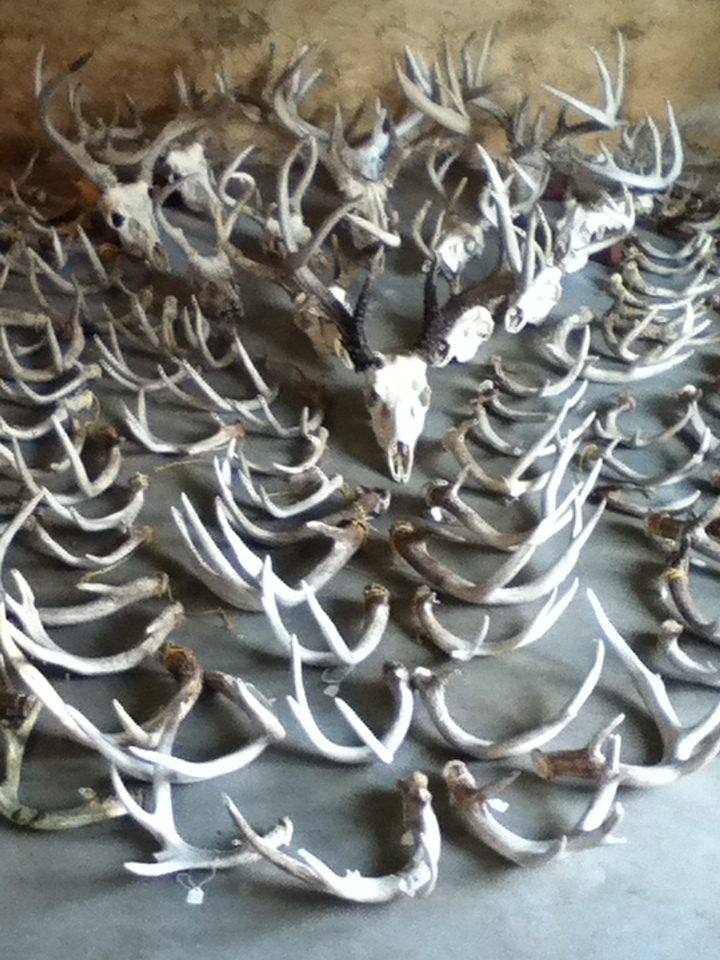
Mark Koeppl is reclining on a shaded porch, looking out over a barnyard where an old, deaf potbellied pig dozes beneath a big red barn. Black and white striped Dominique chickens – a rare bird and a favorite of early pioneers – shuffle their feet across the grass in search of bugs. A mottled cat leisurely sips rainwater from a blue, five-gallon bucket at the foot of the porch, its hind legs dangling awkwardly. A pair of sheepdogs take turns herding each other, occasionally blowing up the congregation of hens as they whiz through.
Right now, the scene is quiet, accentuated by the occasionally quacking of ducks in a nearby pond. But sometimes, when the bison are on the move, the earth rumbles.
It all started half a century ago. Koeppl, now a tanned, long-haired, semi-retired bison farmer, was well on his way to a career in veterinary medicine.
“My parents tell me I always wanted to be a vet,” he says. “I don’t exactly remember that. What I do know is that I was the kid always catching pollywogs and turtles and all that stuff, from the time I can remember.”
Koeppl graduated from veterinary school in 1984, finding his niche in emergency care.
“It was something no one else wanted to do,” he says. “But for me, it was the only thing I wanted to do because it’s where you see the quickest results; the quickest return for your efforts. You take an animal in pain and you fix it.”
A Wisconsin native, Koeppl’s veterinary studies had taken him to Massachusetts. But Wisconsin, with its open spaces, rolling topography and diverse ecosystem, called him back.
Then he came across a newspaper ad for a dilapidated old farm being sold by the bank.
“It was,” he says with a big grin. “A total disaster.”
He bought the land and got to work turning it into a veritable Eden. A large component of the plan was bison, an icon that represents America at both its best and worst.
“It was 1996, and I thought, ‘I’d like to have some buffalo,’” he recalls. “I always thought they were really cool, and my species was pretty bad to theirs.”
The brawny, shaggy, humped creatures, built for speed and maneuverability, once roamed most of North America, including what is now Wisconsin. Prior to 1492, scientists estimate there were as many as 60 million buffalo living here. By the end of the 19th Century, there were less than 1,000.
Koeppl simply brought a few back.
“For the first few years, they just kind of lived and reproduced,” he says. “They’re easy keepers. Even in the coldest winters they just took care of themselves.”
The bison, naturally adapted to this region’s vast fluctuations in climate, even flourished during summer droughts.
Eventually, the startup buffalo herd, grazing across a swath of 50-odd acres on the outskirts of Mount Horeb, grew too large to be self-sustaining.
“It got to the point where I had to thin the herd,” he explains. “That’s how I kind of backed into the bison meat business.”
Today, Koeppl keeps about 35 bison, slaughtering three times each year. “The meat is usually sold before we leave,” he says.
Right now, he is “perplexed” by what seems to be a completely unpredictable calving schedule. “Bison perplex me all the time,” he says. “That’s just one of the things I love about them.”
On some days, he never sees the herd as it roams across the outskirts of the expansive territory. On other days, he can hear them “talking – grunting and purring contentedly as they graze” near the barnyard.
It is usually when he opens up a new section of pasture that they stampede, thrumming the earth of southern Wisconsin, just as they did for thousands of years.
“It’s like every western movie,” he says. “It’s incredible how fast they are.”
While closely related to cows, bison are markedly different in vital ways. Far larger – with males sometimes weighing in at one ton – they can run as speeds up to 40 miles per hour and have been observed jumping six feet in the air. They can turn, according to Koeppl, on a dime. These skills, which evolved to help members of the herd elude wolves, make them a sight to behold when they bolt.
Having left the porch and strolled down into the barnyard, now standing amidst the chickens and just a few yards from the still-slumbering geriatric pig, Koeppl looks out over a ridge where the bison often appear as they roam.
“So why,” he asks, “would you ever want to go anywhere else?”
Editor’s note: The terms “bison” and “buffalo” are used interchangeably for the purposes of this article. Some will point out that the true “buffalo” lives only in Africa and Asia, but the term is widely accepted in reference to the American bison.